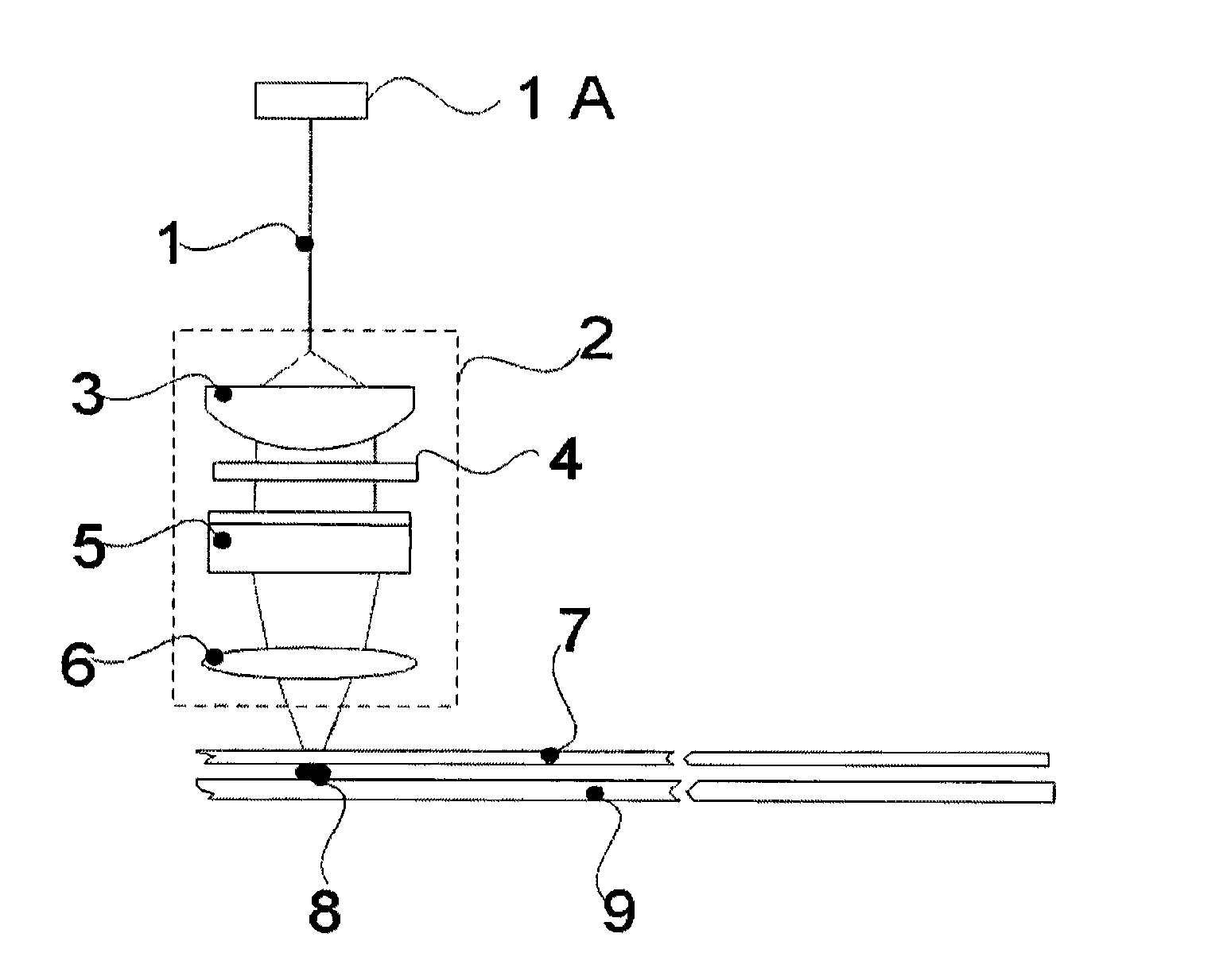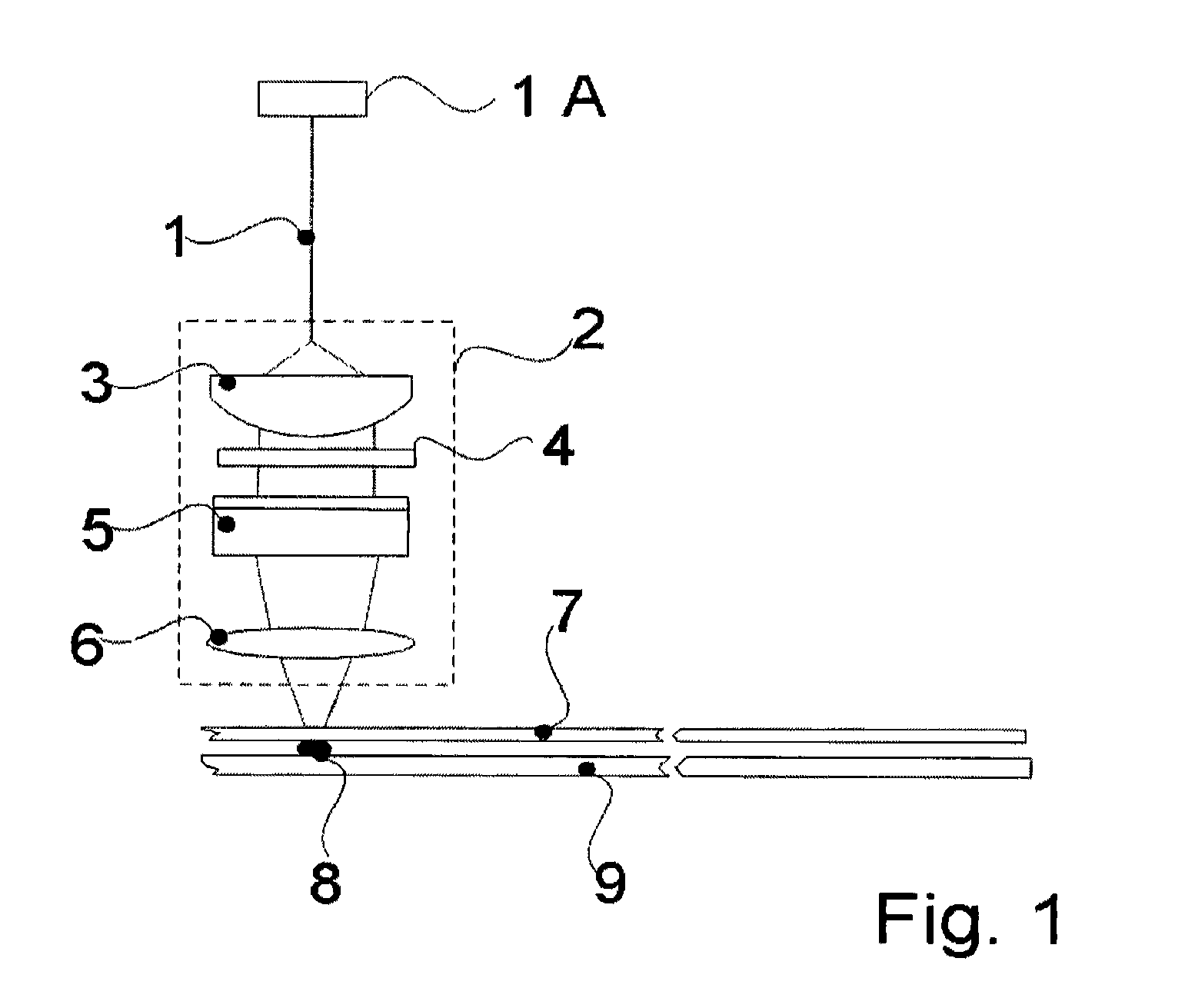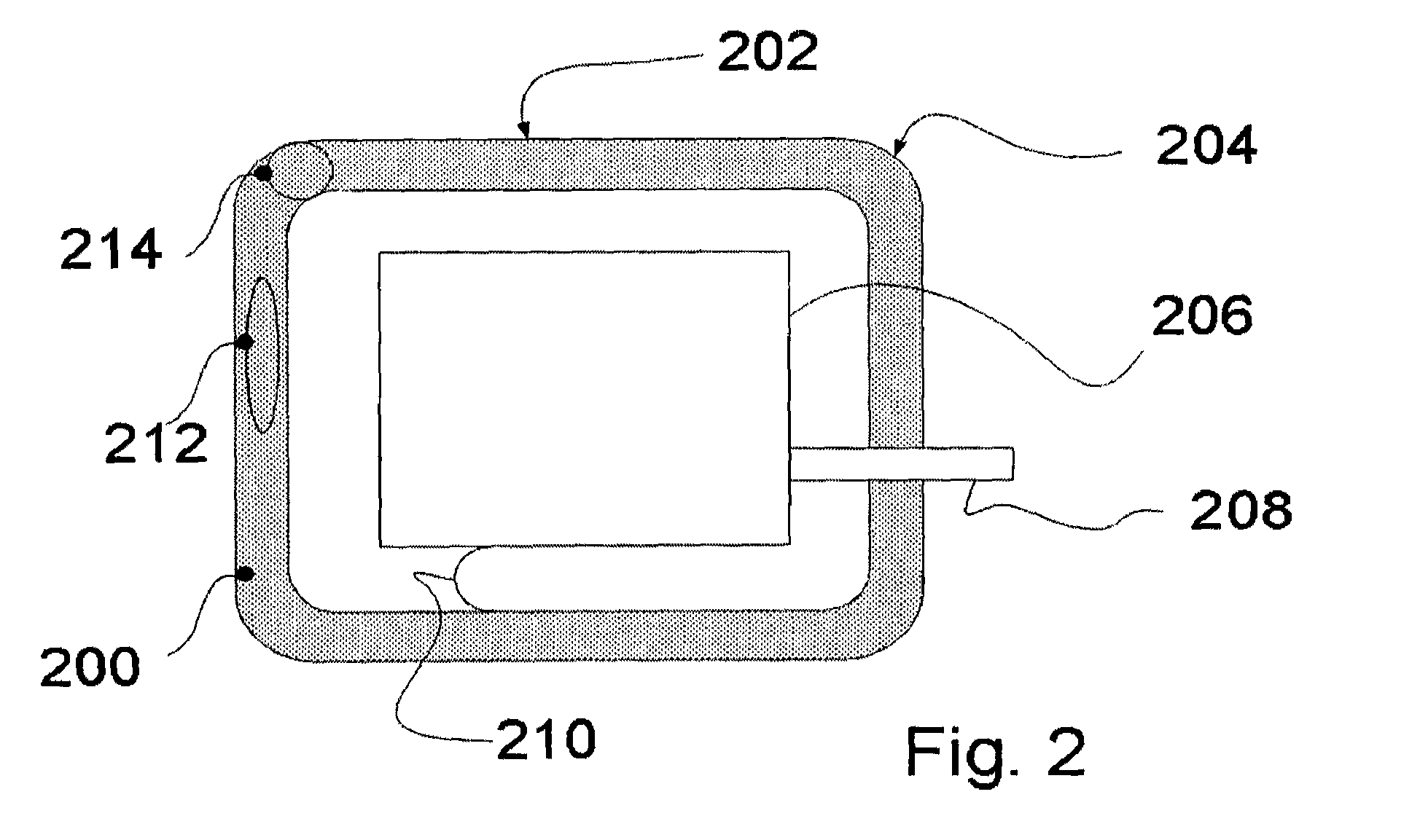Method and apparatus for frit sealing with a variable laser beam
a variable laser beam and frit technology, applied in the manufacture of electrode systems, cold cathode manufacturing, electric discharge tubes/lamps, etc., can solve the problems of reducing the useful life of oleds, oleds are susceptible to damage, and the conventional oled manufacturing is very expensive, so as to improve the utilization of frit width and strength, the effect of uniform temperature distribution
- Summary
- Abstract
- Description
- Claims
- Application Information
AI Technical Summary
Benefits of technology
Problems solved by technology
Method used
Image
Examples
Embodiment Construction
[0035]In accordance with the teachings of the present invention a method and apparatus for sealing an OLED is presented. In one embodiment a method and apparatus for dynamically shaping a laser beam onto a frit pattern is presented. The method and apparatus enables dynamic shaping of a laser beam and dynamic changes to characteristics of the laser beam in real-time during the laser sealing process. As such, variations in the frit pattern may be accommodated and a better hermetic seal may be achieved.
[0036]In one embodiment, a beam shaper is implemented using a plurality of optical lenses (i.e., optical system) that are selected or are adjusted relative to each other to dynamically shape a laser beam in real-time during the sealing process. In another embodiment, a diffuser is positioned within the optical system and the combination of the optical lenses and the diffuser are selected and / or adjusted to dynamically shape a laser beam footprint (i.e., beam size and shape) and dynamical...
PUM
| Property | Measurement | Unit |
|---|---|---|
| aspect ratio | aaaaa | aaaaa |
| aspect ratio | aaaaa | aaaaa |
| aspect ratio | aaaaa | aaaaa |
Abstract
Description
Claims
Application Information
 Login to View More
Login to View More - R&D
- Intellectual Property
- Life Sciences
- Materials
- Tech Scout
- Unparalleled Data Quality
- Higher Quality Content
- 60% Fewer Hallucinations
Browse by: Latest US Patents, China's latest patents, Technical Efficacy Thesaurus, Application Domain, Technology Topic, Popular Technical Reports.
© 2025 PatSnap. All rights reserved.Legal|Privacy policy|Modern Slavery Act Transparency Statement|Sitemap|About US| Contact US: help@patsnap.com



